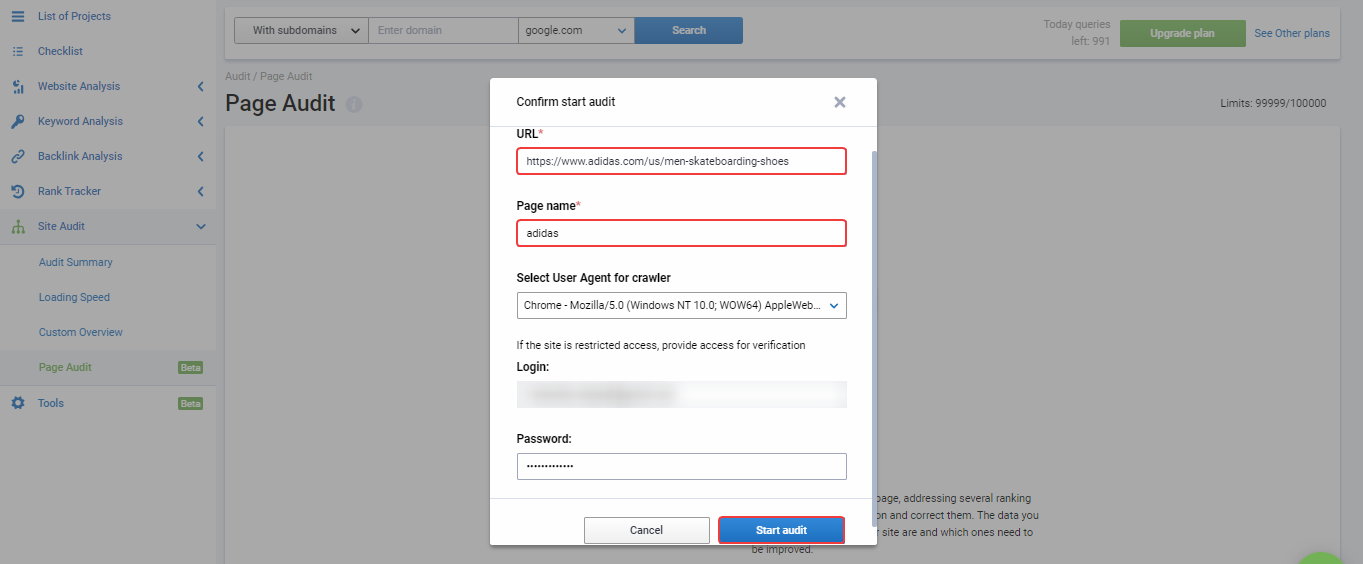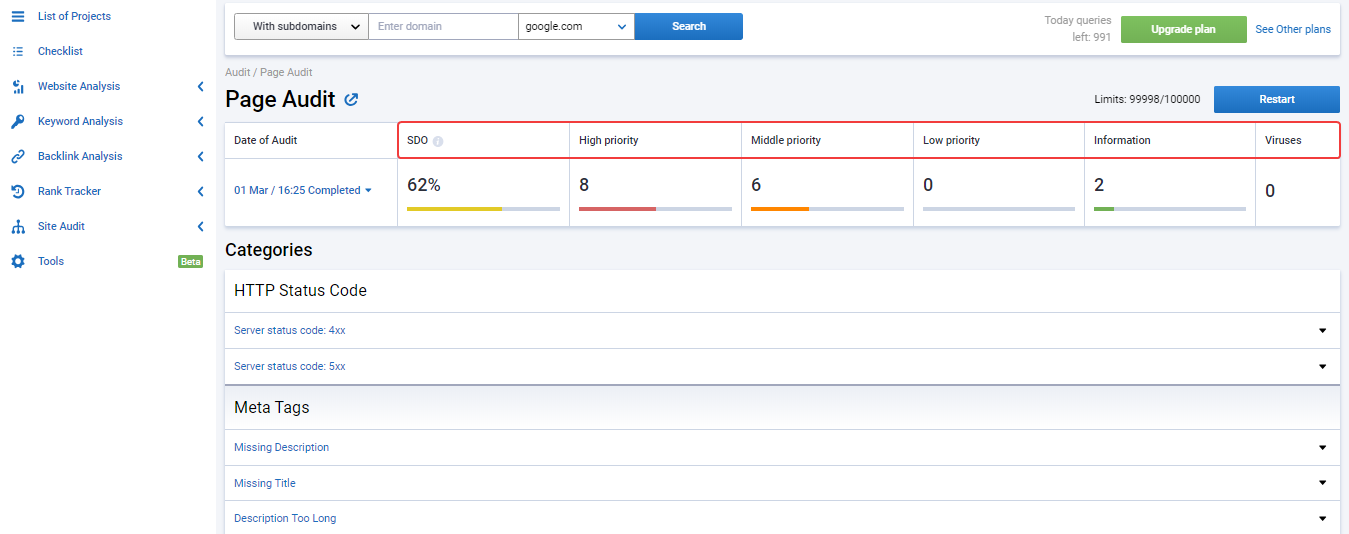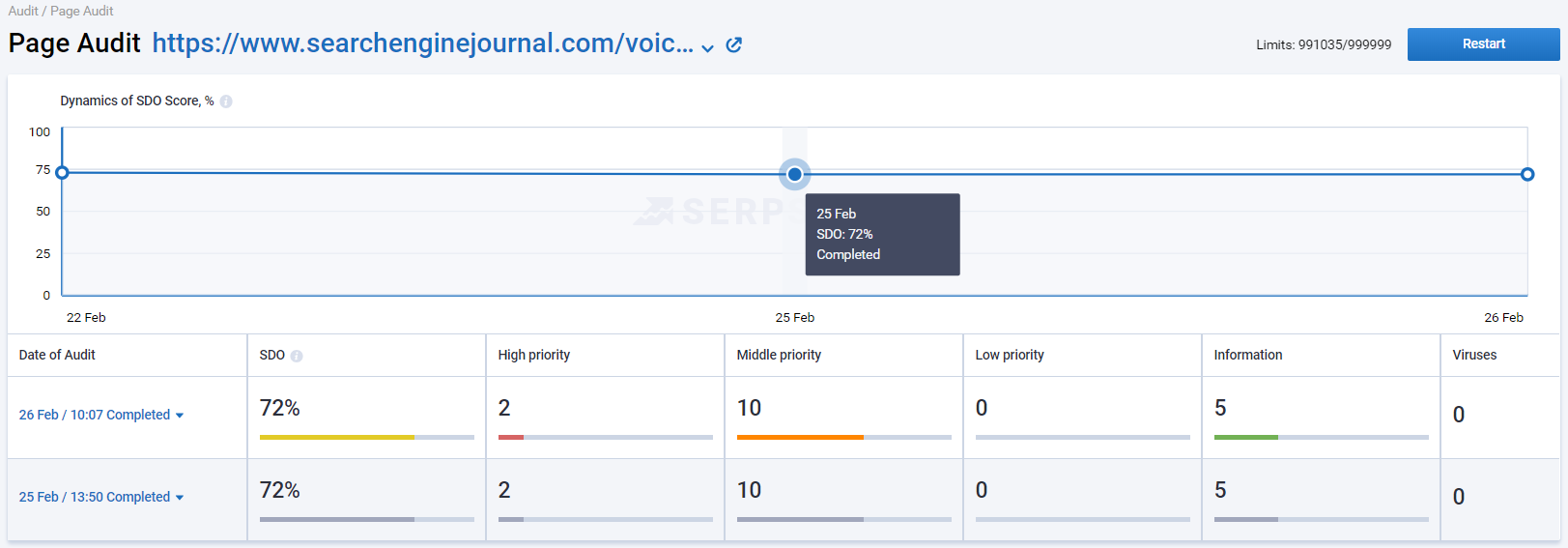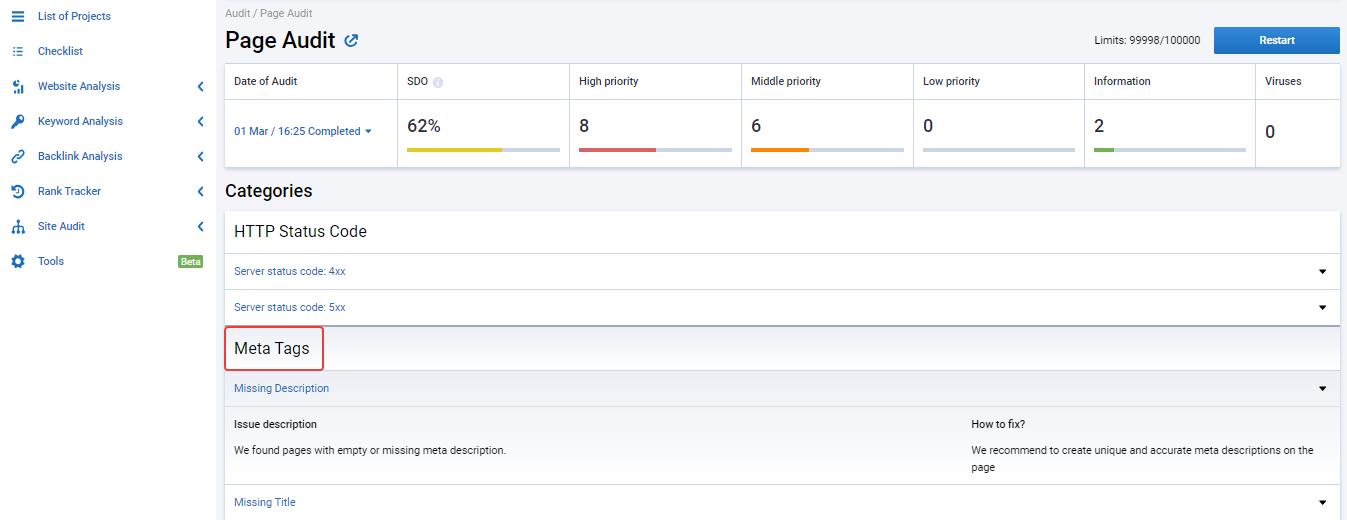Start Exploring Keyword Ideas
Use Serpstat to find the best keywords for your website
Technical Audit Of A Page In 2 Clicks: Rate Your SEO Performance


- How can I check a separate page for errors?
- How can I see if the errors on the page have been fixed?
- How can I save limits on the audit?
What advantages does the page audit offer?
- those that attract traffic
- landing pages
- recently updated pages.
- have changed the site from a technical point of view: the audit analyzes whether it did not lead to any bad consequences
- corrected existing errors: repeat the audit to assess the performance of the actions taken.
Previously, SEOs could not check pages with JS scripts for technical issues with our Audit, because it did not see the content there. Now the tool can render JS pages and check them for technical issues! Read more about the update and why you need it below.
How do you set up the audit?

- URL of the page you want to check
- page name
- User Agent (how our bot introduces itself to the server)
- login and password will appear automatically.
Click on the button Start Audit and wait a while.



Errors on the page are situated according to priority:
- High priority — the serious errors that significantly affect the ranking and should be fixed immediately
- Middle priority — less important mistakes you should also correct
- Low priority — errors and that hardly affect website positions. Nevertheless, you should also check these things on your website.
Information — recommendations where you should draw attention.
Viruses — results of testing for malicious software.
After you've done several checks, you'll get a graph of the changes on the page:


Which errors does the audit show?
- server status code: 4xx
- server status code: 5xx
- missing description
- missing title
- description too long
- description too short
- title too long
- title too short
- multiple title tags
- missing character encoding
- H1 duplicates the title
- missing H1 heading
- broken headings order
- multiple H1 headings
- page size is too large
- missing body text
- pages with Lorem ipsum
- broken images
- image size is too large
- multiple rel=canonical tags
- flash elements on page
- Iframe found on page
- page is hidden from indexation via noindex tag
- low word count
- page with canonical tag
- page is hidden in robots.txt
- cross-domain canonical links
- redirect is not set up on the page
- too many URL parameters
- URL Too Long
- missing Favicon
- too many external links
- rel=nofollow attributes on external links
- rel=nofollow attributes on internal links
- incorrect certificate name
- using HTTP Strict Transport Security (HSTS) support
- old version of the TLS protocol
- using SSL protocol
- the certificate is not trusted in all web browsers
- self-signed certificate
- certificates are valid
- HTTPS URLs are present in sitemap.xml
- mixed content
- HTTPS page goes to HTTP
- unsecured page
- page is not multilingual
- AMP is not used
- implemented schema markup
- implemented Open Graph
- implemented Twitter Cards
Summary
Speed up your search marketing growth with Serpstat!
Keyword and backlink opportunities, competitors' online strategy, daily rankings and SEO-related issues.
A pack of tools for reducing your time on SEO tasks.
Recommended posts
Cases, life hacks, researches, and useful articles
Don’t you have time to follow the news? No worries! Our editor will choose articles that will definitely help you with your work. Join our cozy community :)
By clicking the button, you agree to our privacy policy.
